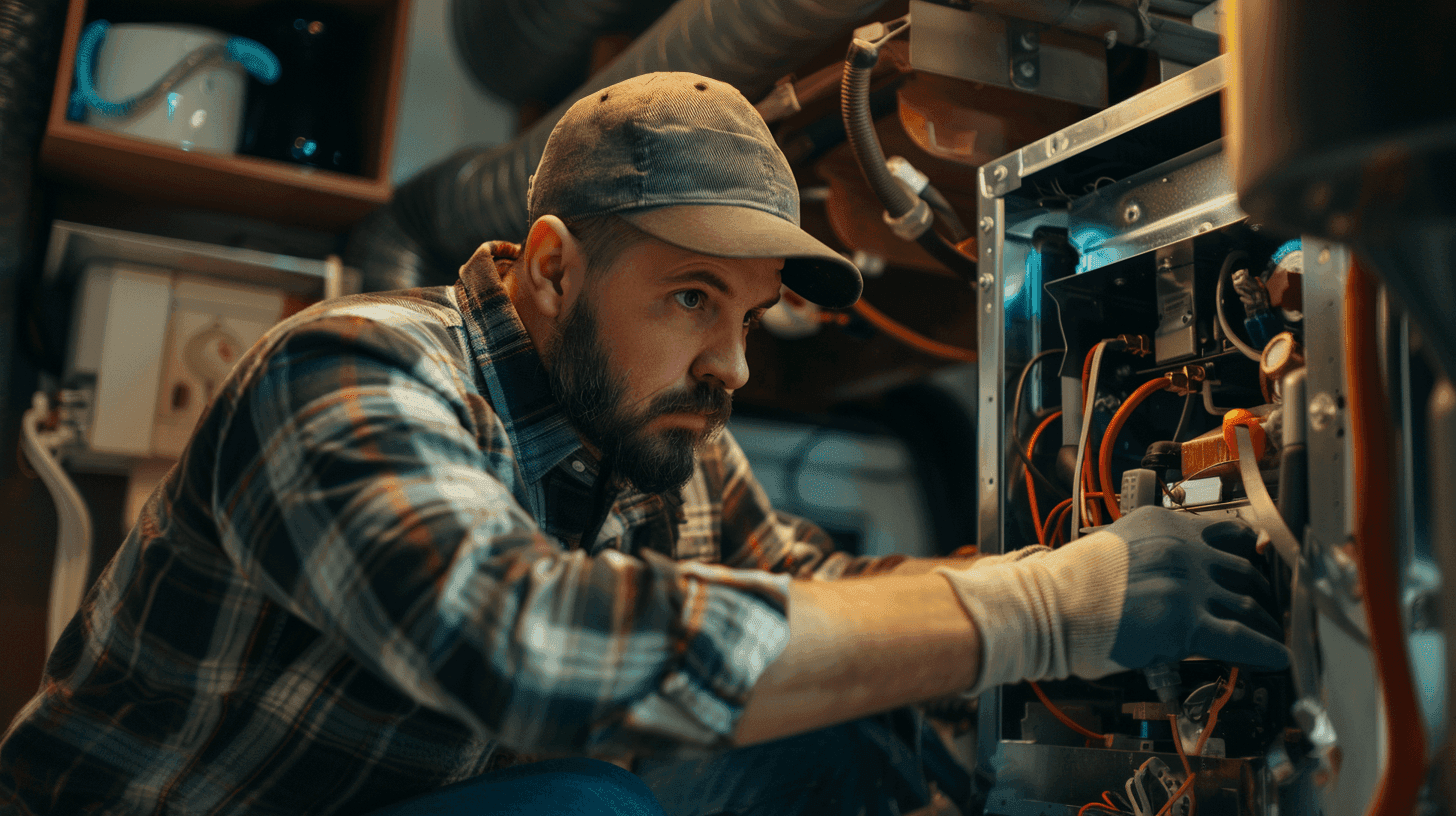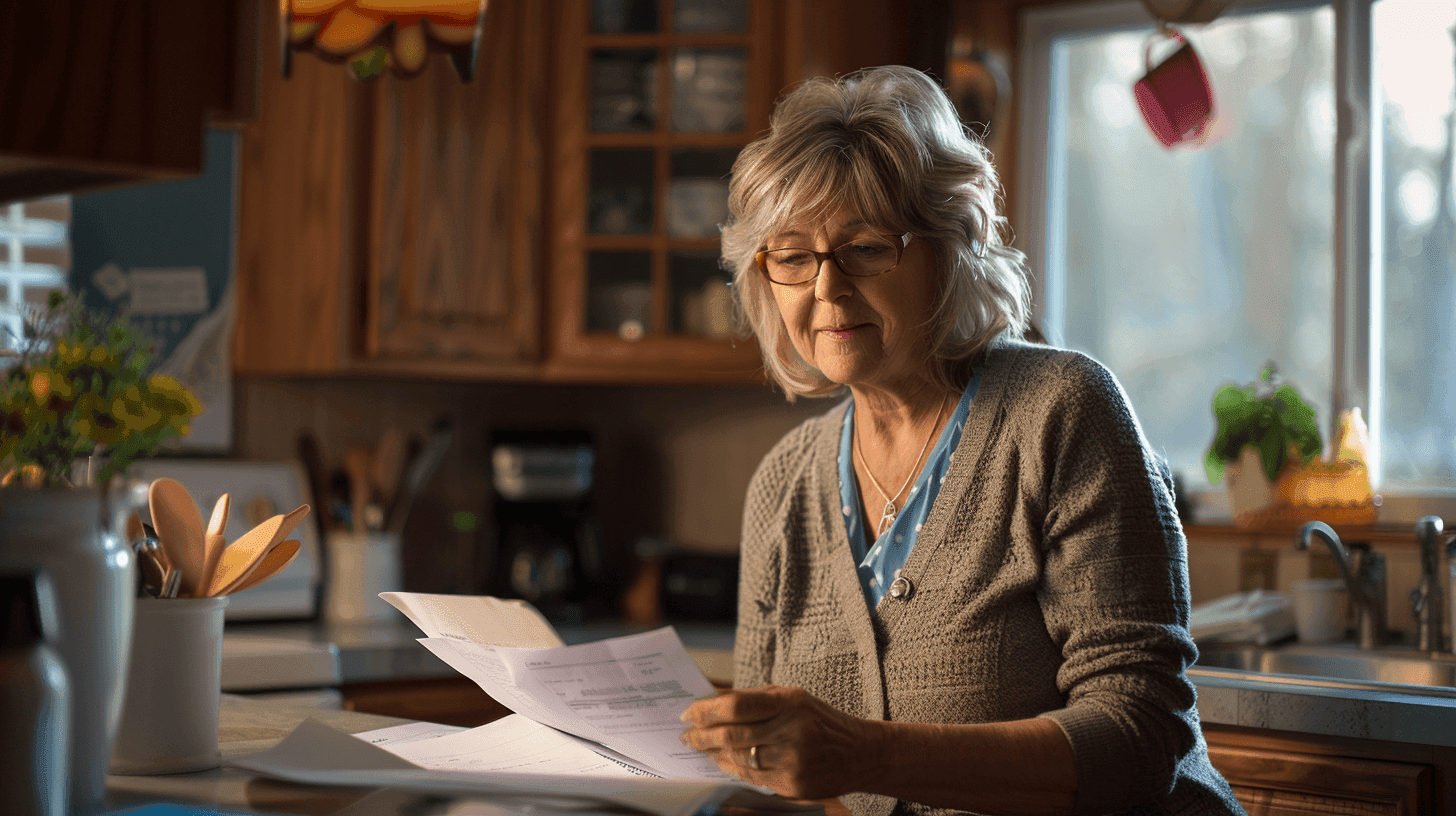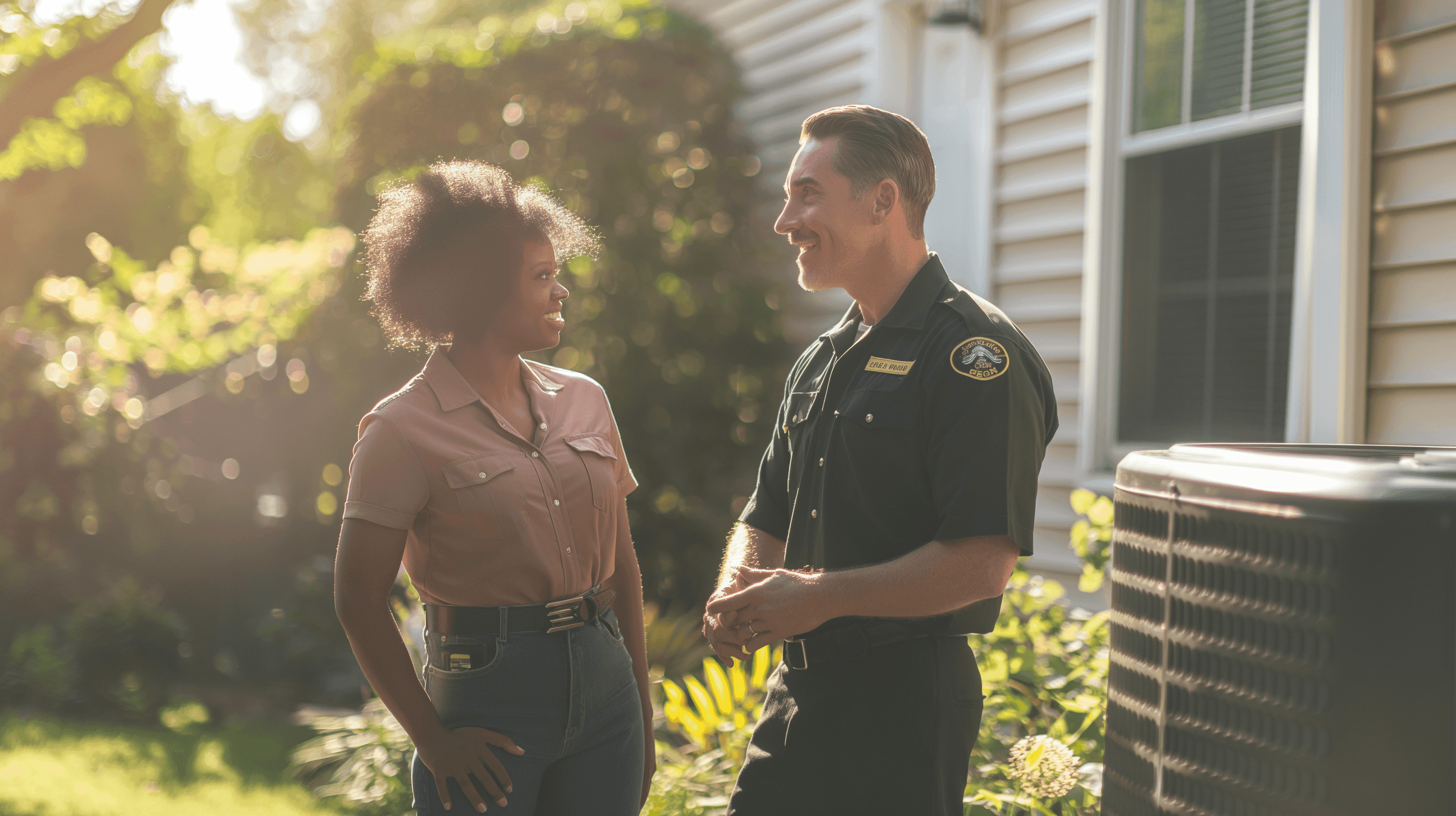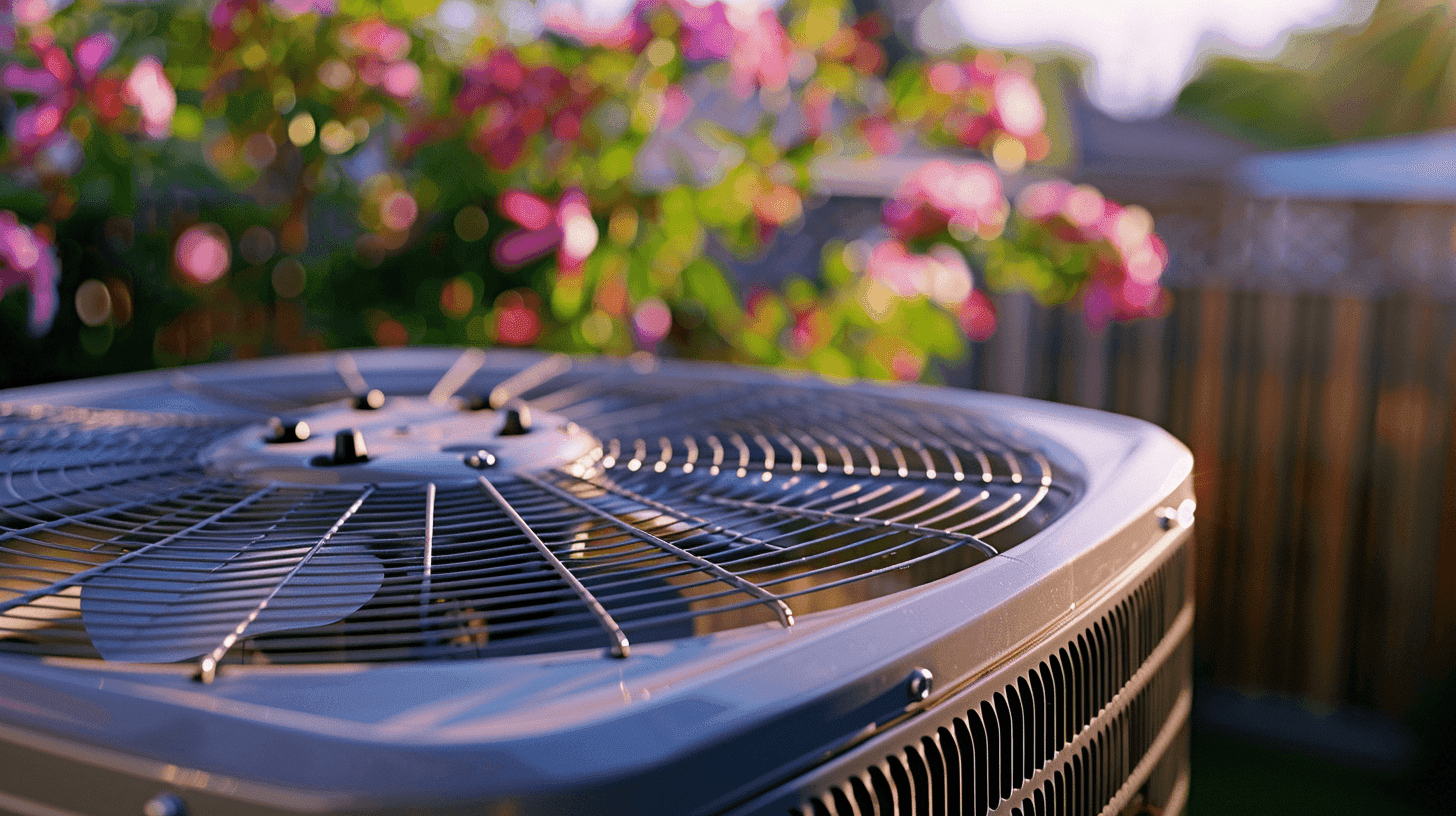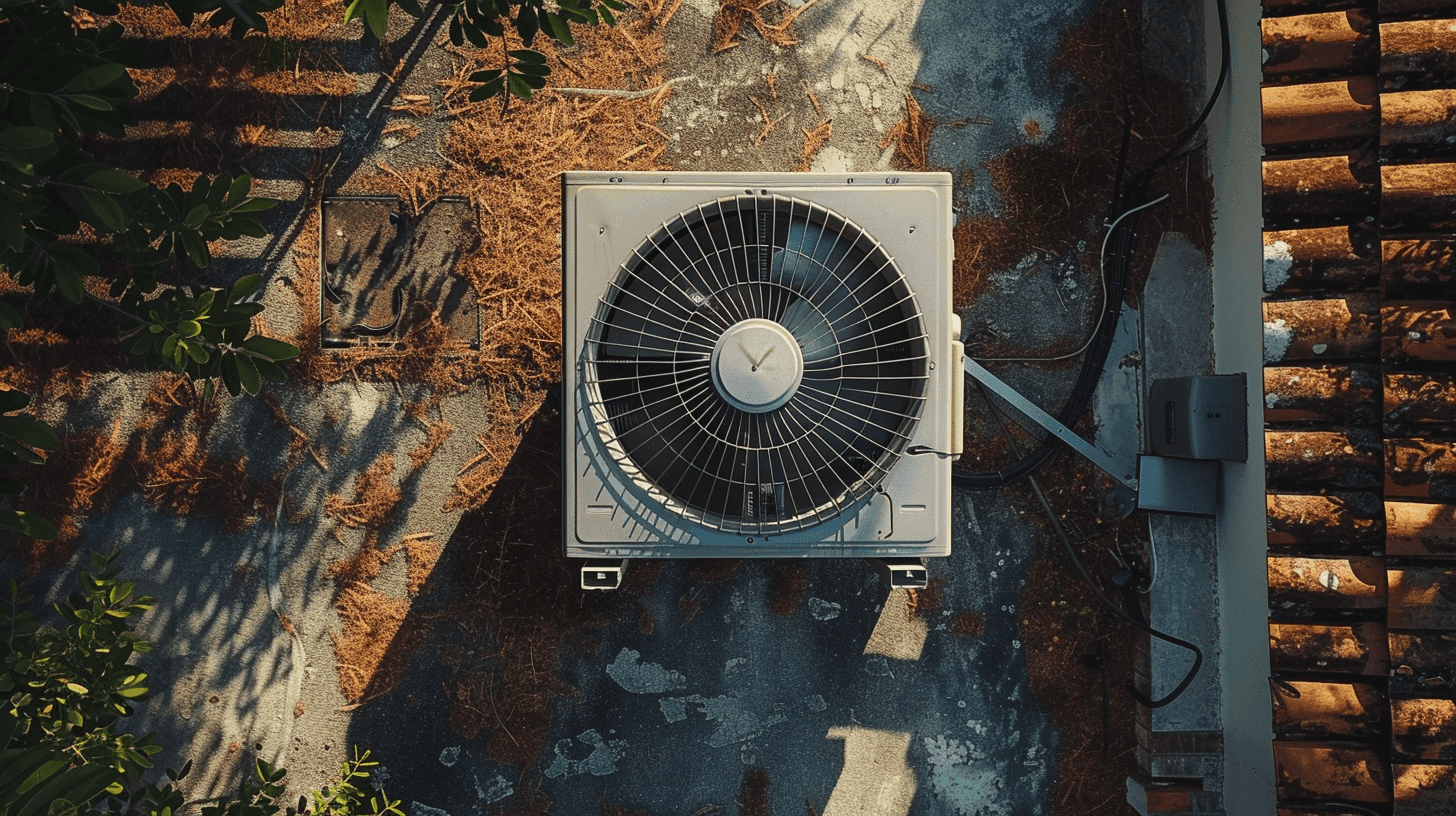
AC repair: what you need to know
Sharing your quote takes less than a minute
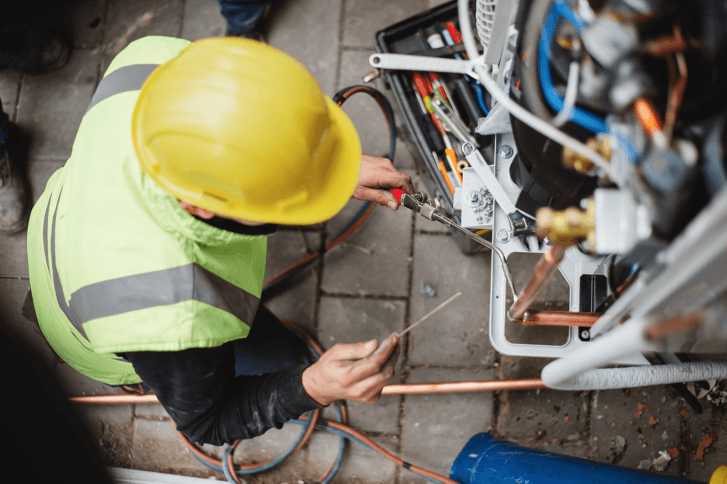
Late spring and summer put HVAC technicians in high demand. As temperatures rise, homeowners rely on their central air conditioning system on a regular basis. When cool air isn’t flowing from the vents, an air conditioner repair may be needed.
Unless you’re a trained HVAC technician, we don’t recommend opening your unit and testing or replacing parts. However, there are some simple air conditioner troubleshooting steps you can take to determine the severity of the problem.
Most Common AC Repair Problems
Understanding some of the most common reasons your AC may not be working will help you feel more confident during the a/c repair process. From simple solutions, like recharging refrigerant, to larger challenges, like a failed AC capacitor, look for these symptoms to pinpoint the problem.
Refrigerant Leak
AC refrigerant is a chemical that absorbs heat from your home and rejects the heat to the outdoor unit, delivering cool air back into the occupied space. Without refrigerant, or if there is a leak in the system, the air conditioner will not be able to cool the air coming into your home.
Signs of an AC refrigerant leak:
- Unexpected increase in cooling cost. Without the proper amount of refrigerant, the unit will work harder and longer to try to lower the temperature in your home.
- Air coming from vents isn’t cool. Without refrigerant, the HVAC loses its cooling capacity. You may hear the unit running and feel air being dispersed throughout the home, but it likely won’t be cool enough to make your space comfortable.
- Increased indoor humidity. A low refrigerant level won’t allow the indoor coil to get cold enough to remove moisture in the air, causing the humidity level in the home to rise.
- Outdoor unit makes a hissing sound. If your unit sounds like it’s releasing air or hissing, a leak within the system is likely.
The AC repair needed to address a refrigerant leak may include repairing or replacing the line where the leak has occurred and recharging the unit. Recharging your home’s AC is when a technician adds more refrigerant to the unit and, if needed, pressurizes the chemical to ensure it will cool and dehumidify your home properly. The Environmental Protection Agency mandates that only a certified technician can recharge your home’s HVAC unit.
HVAC drainage issues
An air conditioner’s cooling process produces condensation, which normally flows away from the equipment, allowing the unit to operate smoothly. However, if a clog develops in the condensate drain lines or drip pan, or if outdoor humidity levels are high, moisture may back up into your air conditioner.
Excess condensation will increase indoor humidity levels and hinder the air conditioner’s performance. It could also cause damage to the unit’s components. There are three likely drain issues to look for in your AC troubleshooting process:
- Water leakage and spilling: When algae, mold, or other debris blocks the trap or pipe, the condensate pan will fill with water and can eventually overflow. If left unaddressed, the water can damage your drywall, floors, or HVAC system.
- Mold growth: An odor of mildew or dampness may indicate mold is growing in the drain tube. Scheduling regular cleaning of the condensate drain will help avoid poor indoor air quality because of mold spores.
- Drain trap: A U-shape trap is connected to the condensate drain and allows water to flow out of the system. The trap can become clogged or dry out. Mold, mildew, and fungus can develop if water doesn’t flow properly, causing odors to back up into your home.
If your air conditioning system shuts down, it may because the overflow components were triggered and the float switch signaled for the unit to turn off. A trained HVAC technician should make this AC repair.
Air conditioner broken compressor fan
Your air conditioner’s outside unit is home to the compressor, fan, and condenser coils. These components work to release heat from the air, transferring heat out of your home to produce a cool indoor climate.
When the outdoor fan isn’t working correctly, the heat transfer process is hindered. A broken fan can cause the system’s compressor to overheat, triggering the air conditioner’s safety controls and turning off the air conditioner.
Symptoms of a bad AC compressor:
- Lack of hot air being released from the outdoor unit. The compressor is designed to compress refrigerant gasses from a low temperature / low pressure to a high temperature / high pressure gas. Hot gas travels through the outdoor unit coils and is cooled by the fan, which is why you feel hot air blowing out of the outdoor system. If the fan in your outdoor unit is expelling lukewarm or cool air, the compressor may need to be repaired.
- Unit makes strange noises. Banging, screeching, or clicking noises coming from the outdoor unit when the AC is turned on may point to electrical problems with the compressor.
- Indoor temperature isn’t cooling off. The fan inside your home may work properly even when the compressor has failed. If the outdoor unit doesn’t sound like the motor is running, call a technician to explore possible a/c repair options.
- Circuit breaker continually trips. If the compressor begins to pull too much power to perform, it will overheat and trip the circuit breaker. This could be a warning sign that the compressor is about to fail.
There are other ways a bad compressor will present itself, but these are a few of the most common problems. Replacing or repairing the compressor is not a DIY job. Allow a qualified home AC repair specialist to diagnose and fix the issue.
Frozen evaporator coil
Poor airflow through your cooling system can cause ice to form on the evaporator coil. A number of problems can contribute to poor airflow, like a dirty air filter or blocked return air ducts.
If you suspect the coil is frozen, you’ll likely need an HVAC repair professional, but you can still try these AC troubleshooting steps.
- Thaw the coils. Turn the AC unit off or to “fan only” mode. It can take up to 24 hours for the coils to thaw completely.
- Check the filter. If air flow has deteriorated because of a dirty filter, change it and wait for the coils to thaw before turning the system on. If the coils refreeze, call a technician.
- Schedule preventative maintenance. Whether you’re able to determine how to fix home air conditioner problems yourself or relied on a pro, schedule seasonal maintenance now to prevent further damage to your unit.
Emergency AC Repairs
It’s never a convenient time to have to troubleshoot AC problems, but some moments are more problematic than others. If your central air conditioning goes out on a holiday weekend or the middle of the night and there’s no emergency AC repair company available, use our central air troubleshooting steps.
Step 1: Check filters and replace them if needed.
A dirty filter can create low air flow throughout your HVAC system. Replace your filters before calling a technician to see if that addresses your problem.
Step 2: Check all air vents.
Furniture, toys, drapes and other household items can find their way into the path of return and supply vents. Do a walk through of your home to ensure all vents are clear of blockades and are open.
Step 3: Remove foliage and debris from around the outdoor unit.
Leaves, sticks, and other debris can get stuck within the HVAC unit. Clear the foliage from around and within the unit to support good airflow.
Step 4: Check your thermostat.
Ensure the settings on your thermostat are correct. A recent power outage or trip in the circuit breaker may have caused the thermostat to malfunction.
Step 5: Check your AC circuit breakers.
Go to your home’s electrical panel and look for the breaker for the air conditioning unit. If needed, flip it to the “on” position. Try turning the AC on. If the breaker immediately flips back off, call an HVAC technician to make this a/c repair.
If the unit fails to run properly after you’ve tried these five steps, turn the system off and schedule immediate HVAC care. You don’t want to leave a broken unit running, possibly causing more damage to the components.
Finding local AC repair contractors
A local AC repair contractor is your best bet for quality, timely cooling system repairs. Do your homework before hiring the first company available. Read online reviews of the contractor’s service and follow our tips on how to choose the best HVAC technician in your area.
Troubleshooting for Air Conditioner Repairs
Whenever you experience performance problems with your air conditioner, whether it isn’t producing enough cooling or isn’t turning on, troubleshooting should be your first step. Some simple troubleshooting has the potential to solve the issue, getting your home cool faster without the expense of calling an air conditioner repair company.
Run through these air conditioner troubleshooting steps before you call your air conditioner repair technician:
- Check your thermostat’s settings. The thermostat should be set to cooling model, and the temperature set a few degrees lower than the home’s current temperature to initiate a cooling cycle. Make sure the hold or vacation setting hasn’t accidentally been initiated to halt your air conditioner’s operation.
- Check power. Make sure your thermostat has power, as well as your cooling unit. Replace batteries in the thermostat if necessary. Ensure the power switch of your air handler hasn’t been turned off (it is located on or near the unit inside your home) as well as the power switch to the outdoor component, if applicable (this is likely positioned on the exterior wall of your home near the unit). Check your home’s electrical panel to ensure the breakers of the circuits suppling power to your cooling system are not tripped, or that fuses are in good shape.
- Check your air filter. A filter that has become clogged with contaminants can restrict airflow, preventing cool air from coming into your home. It could also cause the cooling system’s coils to freeze up, inhibiting performance. If your filter is dirty, replace it with a new one or clean your reusable filter according to the manufacturer’s directions.
If these air conditioner troubleshooting steps don’t solve the problem, it’s time to call a local HVAC company for air conditioner repair.
Air Conditioner Repair Costs
Air conditioner repair costs vary greatly, depending on the issue your system experiences. The cost of repairing a home’s cooling system is often stressful for homeowners, especially when it’s a sudden, unexpected expense.
The average air conditioner repair costs homeowners approximately $300. Air conditioning repair contractors typically charge a fee for a service call, covering the diagnostics necessary to determine what is wrong with your cooling system. Service call fees typically range between $50 and $100, and may be more if you need emergency air conditioner repairs.
Below are some average prices of common air conditioner repairs so you know what to expect during your service call:
- Replace condensate drain tube – $20
- Replace condensate drain pump – $240 to $450
- Replace drain pans – $250 to $575
- Flush drain line – $75 to $250
- Recharge refrigerant – $250 to $750
- Repair refrigerant leak – $200 to $1,500
- Replace compressor – $1,900
- Repair outdoor fan motor – $200 to $650
- Replace breakers, relays, or fuses – $75 to $290
- Replace condenser coil – $1,900 to $2,900
Sharing your quote takes less than a minute
